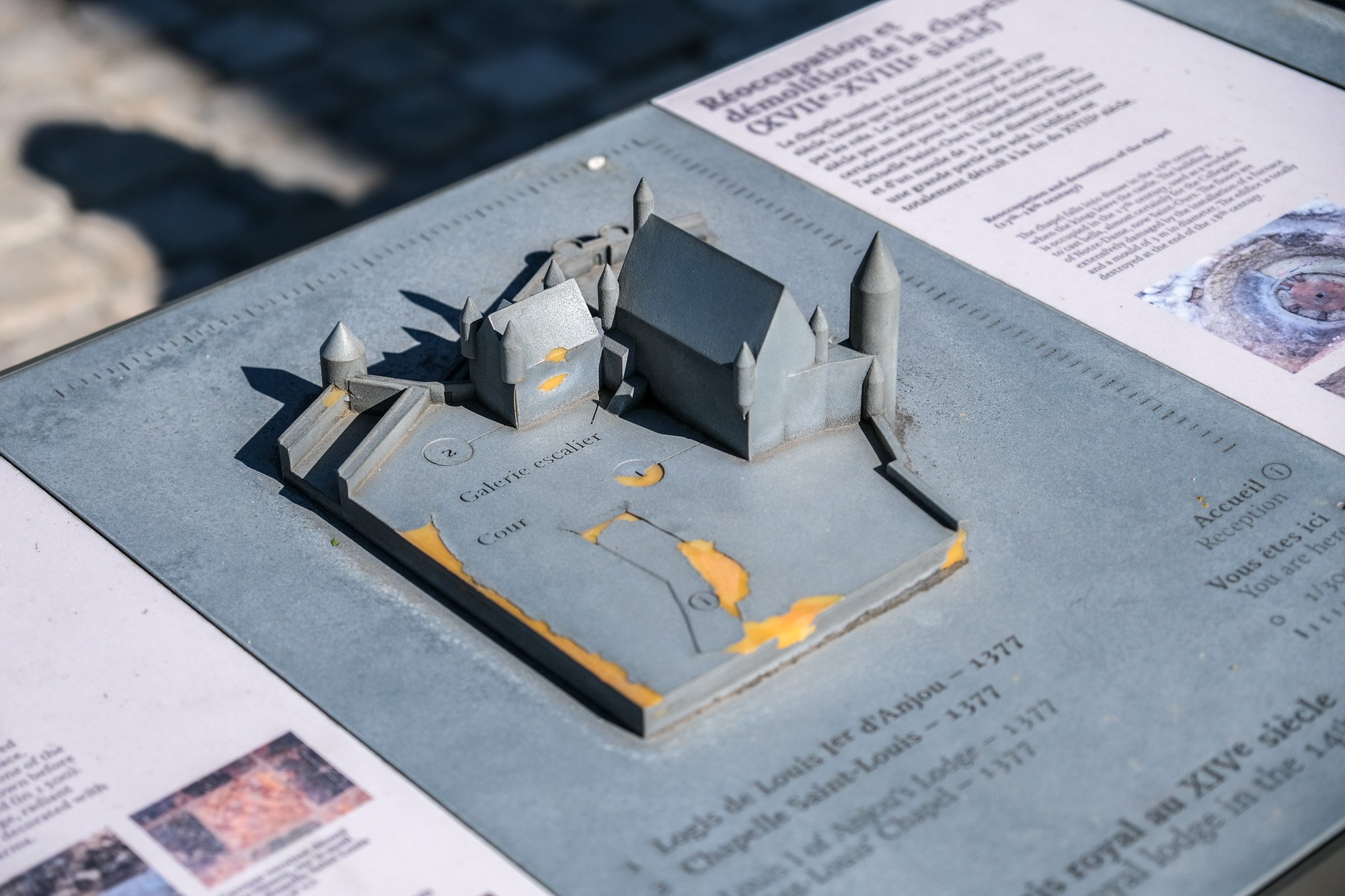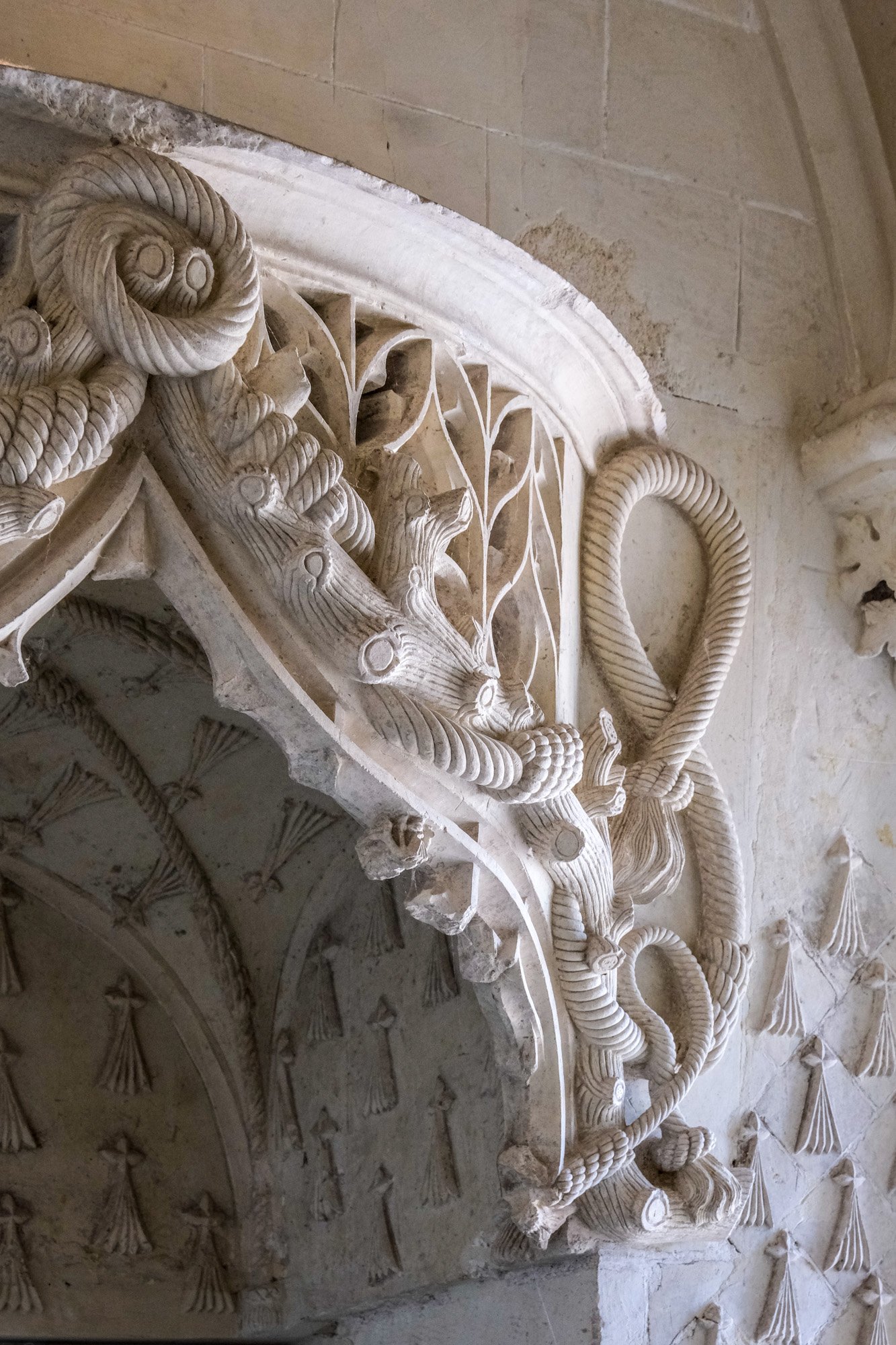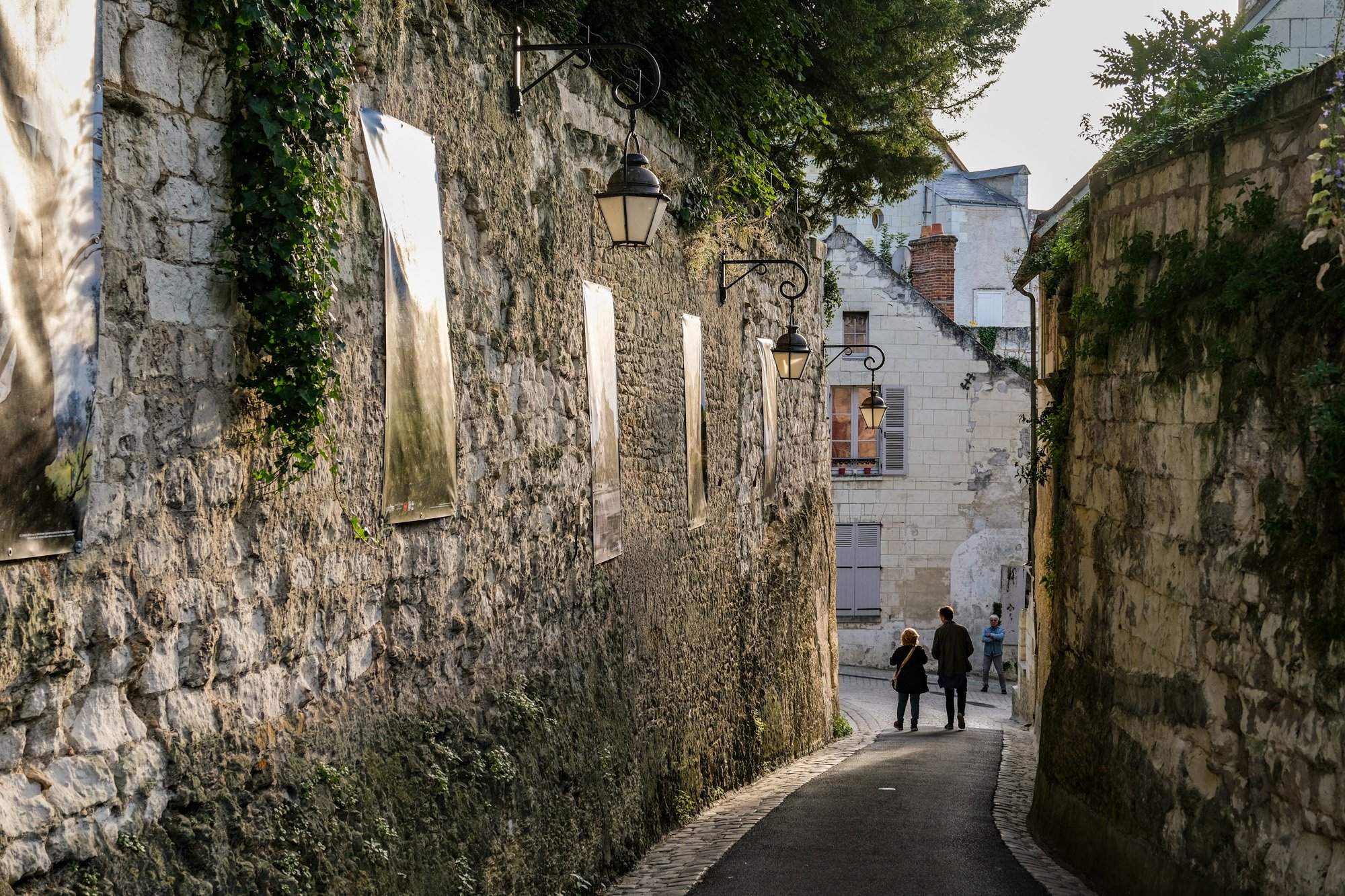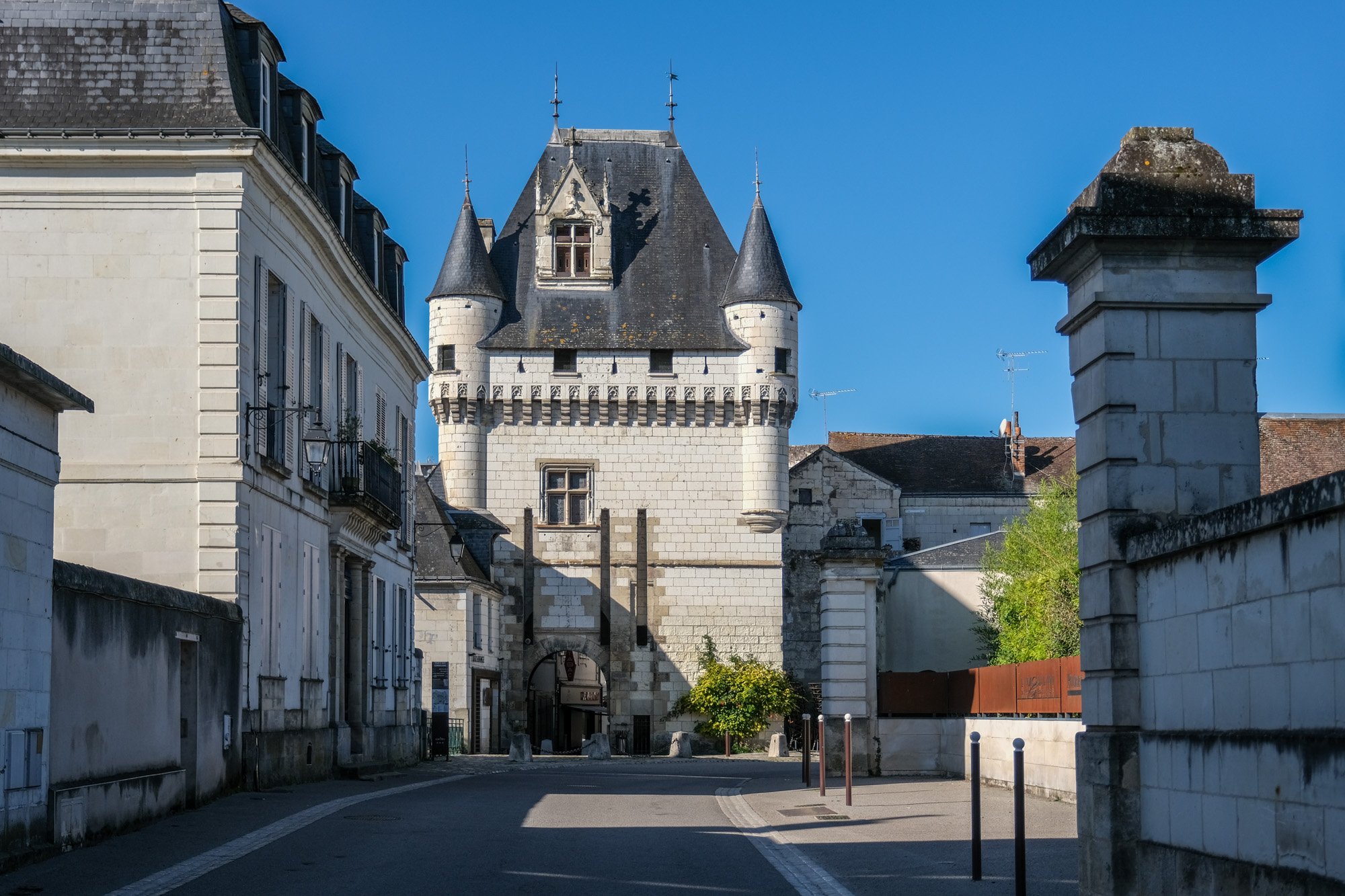Loches & Chinon - In The Footsteps of Joan of Arc
Loire Valley is one of the most storied regions in France and is renowned for many things. Among them are the great Renaissance châteaus like Chambord and Chenonceau. All these châteaus are relics of France's turbulent past. In medieval times, the territory of modern Frane was fragmented into multiple kingdoms. All the châteaus illustrated the ebb and flow of territories between different military forces. In Loire Valley, these fortresses are most often associated with the Hundred Years’ Wars between the kingdom of England and France from 1337 to 1453. Unbeknown to most Americans, English kings once ruled northern France. The kings of France, in fact, only ruled a small portion of modern France.
While most of us may be unfamiliar with the Hundred Years’ War, we have all heard of one of its main historical characters: Joan of Arc. The teenage heroine came from eastern France, but it was in the Loire Valley where she led some of the most pivotal battles. She galvanized the French-speaking population into expelling the English off the continent. Despite their early military triumph in the Siege of Orléans, the British and its allies, the Burgundians, defeated and imprisoned her. She was on trial in an ecclesiastical court for blasphemy and subsequently burned at the stake. When she was eventually canonized in 1920, she earned the unique distinction as the only Catholic saint who was put to death by the Catholic Church.
As I considered writing this post about my visit to Loches and Chinon, the common thread was their association with Joan of Arc. Both towns are slightly off the main tourist trail and worth a special detour. This is by no means the best itinerary to learn about Joan of Arc's life, but these places pinpointed some of the most seminal events in her life. Both towns happen to be excellent home bases while exploring Loire Valley. I was so glad we had a whole week to explore the region; I can’t imagine doing just a two-day mad dash as many tourists do.
Chinon
Aside from Orleans and Rouen, few places have a stronger association with Joan of Arc than Chinon. Located on the banks of the Vienne River near the confluence with the Loire Rover, it has been a coveted spot since Roman times and was once the favored place of the royals in the late Middle Ages. Dominating the village is the imposing remains of a royal château. It perched high above the village and gave Chinon a distinctive skyline. A riverside park is conveniently located across the river and offers a splendid view of Chinon. A few wooden flat-bottom boats moored here also add to the historical charm.
Since we had limited time, we made a beeline to the royal château. First founded in the tenth century, it has natural defenses on three sides. The outline of the current fortress was built under the English king, Henry II, who we “visited” earlier at the Royal Abbey of Fontevraud. The king ruled her vast kingdom from Chinon. As mentioned in my previous post, Henry II faced an unexpected rebellion from his two songs and his wife, Eleanor. Château de Chinon is Henry’s favorite residence in the realm. While he was ultimately able to quell the great revolts, he continued to have quarrels with his son, Richard the Lionheart. He passed away in the Chinon right after he made peace with Richard. It was quite a sad tale of familial disputes.
Fast-forward two decades, Henry II’s son John was on the throne and began to lose England’s continental territory to the French king. Chinon became the last castle to fall to the French forces. After several months of siege, the château was substantially damaged and turned into a prison. In 1307, Pope Clement V, at the urging of the French King, decreed that all members of the infamous Knights Templar in France be arrested. Many disbandments of the order resulted in a full-fledged inquisition. Many members and the order’s leaders were imprisoned, tortured, and burned at the stake. It turned out the king owned a large sum to the Knight Templars, and he saw it more convenient to disband the whole organization than pay his debt.
The prosecution of the Knight Templar was brutal and controversial. Château de Chinon held the most prominent leaders during this period. The order’s sudden and dramatic demise led to many urban legends; many still believe they survived as a secret society to the present day. In 2001, a researcher found a document in the Vatican Archive in which Pope Clement V absolved sins of the senior leadership of Templars. Known as the Chinon Parchment, the document indicates that Clements was pressured into the Inquisition by King Philip, who happened to be his relative.
As intriguing as the Knight Templars are, most visitors were drawn by Chinon’s association with Joan of Arc. According to legend, she was guided by the voices of Saint Michael, Saint Margaret, and Saint Catherine. These saints directed her to free France from the English rules, and Charles VII was the legitimate ruler of France. She begged a local captain to take her to Chinon, where Charles had his court. According to historical accounts, the seventeen-year-old Joan of Arc arrived in Chinon and was granted an audience after two days.
Their meeting has become a legend in itself. Naturally, Charles was suspicious of this young girl's coming out of nowhere. First, he had the ladies of the court “confirm” her virginity through physical examination. Once he heard that Joan regarded him as the legitimate ruler, he tested her to see whether she was a “legit” messenger of divinity. Charles decided to swap outfits and places with one of his guards. Joan was purposefully led to greet the imposter, but she quickly identified Charles from the crowd. Considering that photography had not been invented and there were relatively few portraits in circulation, Joan’s correct identification and subsequent conversations convinced Charles of her pure intentions.
This famous encounter has been memorialized in literature and countless artworks. Visitors could visit the room where this historic meeting allegedly took place. An enormous tapestry depicting the scene hung nearby. Just as we were taking in the historical significance of this room, we were reminded that the majority of the castle interior we see today is the 21st-century restoration of the castle ruins. The restoration work was beautifully done; keen observers could still distinguish between the original and new masonry. Like many other châteaus around the Loire, Château de Chinon provides digital tablets to visitors. Commonly called “histopad,” these tablets use augmented reality to digitally reconstruct how each room may have appeared in Joan of Arc’s time.
Unsurprisingly, the château has a small but excellent exhibit on the life and legacy of the young heroine. Because Joan was burned alive only two years after meeting Charles, there were little to no physical remains from her life. Partly because of the lack of relics, the story of Joan became larger than life. Her military triumph in freeing Orléans from the siege was widely celebrated, and her subsequent defeat in Paris and Compiègne was often swept under the rug.
To the French, Joan of Arc represents the emergence of a French identity. Her desire to expel the English from France made her a popular figure in French unity despite being captured by French-speaking Burgundians. However, her legacy extends well to nationalism. She was one of the most intriguing feminist figures and perhaps an LGBTQ icon. One of the major charges against her during the trial was that she was known for wearing men’s clothing. It was wild that cross-dressing was punishable by death back then.
Visitors from the fortress's outdoor terrace have a fantastic view of the valley and medieval city. Because of its geography, Chinon's medieval town is remarkably preserved. A handy exterior elevator takes visitors to the town center in a minute. The elevator tower was just about the only modern structure in town. It was already late afternoon when we arrived; barely anyone was on the streets. According to the town’s brochure, the local government has been working to attract at least a quarter of a million visitors a year. Even though we only spent half an hour exploring the town center, we could see how Chinon could be a major stop on any Loire itinerary.
Coincidentally, Chinon is Rick Steve’s preferred home base for sightseeing west of Tours, and I could see why. The town is noticeably more subdued than places like Amboise and Bloise. According to Rick’s guidebook, Chinon is ideal for exploring the nearby countryside by kayak or bike. I would love to spend a night here without the unique stay at the Royal Abbey of Fontevraud. Chinon is also known for its red wine production, with Chinon AOC widely distributed in the United States. Wine connoisseurs could easily spend a week visiting numerous wineries within walking distance.
Loches
Loches seems like a detour from the tourist trail compared to Chinon. While planning our Loire Valley trip, I was intrigued by a hotel deal in Loches. Best Western Plus Hotel de la Cite Royale is a recently renovated property within the city’s former courthouse. For 110 USD a night, we enjoyed the beautiful city-view room with a lovely private terrace. Luckily, Loches turned out to be a hidden gem and one of the most underrated stops on our trip. It is one of those places that reminded us it is worthwhile to take a road less traveled once in a while.
Like Chinon, the village is dominated by the royal château on the hilltop. The castle’s massive keep (donjon) dominates the village’s skyline and signifies Loches’s strategic position. Naturally, we made that our first stop in town. Also known as the Royal Lodge of Loches, the château was first built in the 10th century and reached its zenith during the reign of King Philip II, who captured the castle from the English in 1204. Fast forward two centuries, the château became a favored spot of King Charles VII. While he kept his court in Chinon, he gave the château to Agnès Sorel, his favorite mistress. During his reign, Loches became his second best-fortified town after Chinon.
After Joan of Arc received Charles’s blessing in Chinon, she led a successful campaign to break the siege in Orléans. Fresh from her miraculous victory, she met the king at the royal lodge. Until this point, Charles was considered only Dauphin, an heir apparent to the French Crown. Charles’s father, Charles VI, was an ineffective monarch with psychotic episodes. After a devastating loss to the English, the elder Charles signed away the crown of France by naming the English king as his heir in the Treaty of Troyes. This caused a lot of turmoil and created a succession crisis after the elder Charles’s death. The young Charles was driven out of Paris and set up a rival court.
While young Charles always claimed the throne, he could not have a coronation ceremony as the traditional place of coronation was in the hands of rival Burgundians. Because of Joan’s victory in Orléans, she convinced him to gather his army to march across enemy territory to the city of Reims. With Jona on his side, Charles was officially crowned in a traditional ceremony on July 17, 1429. According to historical records, Joan stood beside the archbishop during the coronation ceremony. His coronation marked another significant turning point in the Hundred Year’s War and a precursor to the defeat of the English two decades later.
The Royal Lodge contains a good exhibition celebrating Joan's life. The exhibit includes period weapons, armor, and tapestries. As the name "Royal Lodge” suggests, this building was built as a hunting lodge and lacks typical defensive features. The main ceremonial staircase is decorated with a herd of whimsical hunting dogs. The southern end was built by Louis I of Anjou in the 14th century, and the northern half by Anne of Brittany a century later. It resembles a pleasure palace rather than a formidable fortress.
The most notable resident was Agnès Sorel. She was King Charles VII's favorite mistress and the first to be bestowed the distinction of Royal Mistress. She was known for her beauty and great intelligence. Charles lavished his young mistress greatly and wielded influence over the administration. Besides her beauty, she was well-known for her salacious fashions. Agnes often wore low-cut gowns, which revealed her breasts and nipples. Even the Archbishop of Reims had to intervene.
Agnès Sorel was immortalized with numerous portraits by some of the era's most notable artists. One painting by Jean Fouquet, in particular, caused great scandal at the time. Fouquet portrayed her as the Virgin Mary and her illegitimate child as Christ. Her supple left bare breast was hung out for all to see. The image is not only considered sacrilegious but also politically improper. A copy of this painting hangs in the Roya Lodge. It is one of the most disturbing and surrealistic Modanna and Child paintings I have ever seen. Her pale skin and the red and blue angels behind her look like scene from hell.
Agnès Sorel was buried in the nearby Saint-Ours Church of Loches. Her tomb was desecrated during the French Revolution, but her stone sarcophagus and marble effigy were beautifully restored in 2005. Of course, the church also has a statue of Joan of Arc. The whitewashing and destruction caused by the revolution are evident. Vestiges of vivid colors from the Middle Ages still peek through at places. This church may not have an ornate interior, but it is a unique masterpiece of Romanesque architecture. The church’s nave is capped with two octagon spires, creating a distinct silhouette.
A short walk south of the church brought us to the oldest part of the château: the keeps (or Donjon.) The keeps require a separate ticket, but it was well worth it. From entering the fortified complex, one could appreciate the immense scale of its construction. The fortress seems even more impenetrable than the one in Chinon. A handy histopad helped us navigate the narrow passageway and digitally recreated many hidden features. We were able to explore down to the bedrock. I could imagine how much kids would enjoy this place.
Obviously, the pièce de résistance was to climb up the donjon. The 121-foot-tall keep has four stories and once housed the main reception hall for Loches. Although the massive timber beams are gone, the histopads bring the space back to life. With floors gone, the keep’s interiors became a towering open-air pan. It was not surprising that the management installed the netting at the bottom for suicide prevention. Those suffering from acrophobia might find the climb a little challenging.
From the top, visitors have a beautiful view of the surrounding valley. Unlike most other châteaus we visited on this trip, Château de Loches saw plenty of military actions throughout the centuries. The plain exterior is a testament to its military prowess. I enjoyed spying on my parents back on the ground level. Because of the thickness of the walls and the lack of additional protective barriers along the perimeter, it was tricky to get a view of some of the most famous monuments of Loches. Fortunately, I got a perfect shot of our hotel.
Loches’s Donjon held many important prisoners throughout history. During the American Revolutionary War, France allied with the United States against the English. Many of the prisoners of war from that war were imprisoned here. However, Duke of Milan Ludovico Sforza is the most famous captive held here. You might have heard of him from movies and TV shows like The Borgia and Leonardo. Ludovico lived in the most eventful period of Renaissance Europe and is contemporary to Leonardo da Vinci and Pope Alexander VI. He was ambitious and a force to be reckoned with in Renaissance Italy.
He was eventually defeated and imprisoned by French King Louis XII. As a high-profile prisoner, he was afforded my privileges, including attendants and access to the library. Despite pleas from many of his peers, the King refused to release Ludivico. Before our visit, I had no idea he was imprisoned here, so it was a pleasant surprise to have an unexpected encounter with one of the most fascinating historical figures. The cell where he was imprisoned was preserved, including elaborate murals and graffiti carved into the tufa stone. Although these graffitis are relatively crude as art, I can’t help but wonder whether they were hand-carved by Ludovico himself. A small exhibit was also housed in the town center’s old Chancery building.
With the Château de Loches behind us, we were eager to check out the rest of the town. Regionally, the village is known for a massive morning market every Wednesday and Saturday. Unfortunately, we missed it one day, so the place was eerily quiet. With many shops closed in the middle of a work week, I would see how the French took a relatively relaxed attitude toward commerce. At times, the town felt like it was an open-air museum.` Fortunately, there were still a couple of restaurants open for business. Outside of Paris, having a bad meal is almost impossible in France.
While only a small section of the medieval fortification remains intact, the imposing town gates are beautifully preserved. The beautiful turret-studded gates resemble Disney’s Cinderella Castle but better. After all, this is a real fairytale castle town, and the water floats through the medieval moat. We headed to the Loches Public Garden (Loches Jardin Public) just east of the château to get the best view. I could tell my parents secretly wished they had been born French. The beauty and serenity of this country put America to shame. The views from this park were world-class, yet there were hardly any foreign visitors around.
At the edge of the town was the modest Church of Saint Anthony. In 1999, a local politician discovered two beautiful pictures above the church’s organ. The personal insignia indicates that these pictures once belonged to the French ambassador under King Henry IV and Louise XIII. A contemporary catalog of the ambassador’s estates indicated that he once owned four paintings by Italy’s Baroque master Caravaggio. An academic debate ensued about whether these were from the masters’ hands, from Caravaggio’s studio, or merely in the style of Caravaggio.
According to most academics, the works at Loches were considered inferior and were generally excluded from Caravaggio's catalog. But the people of Loches still insist these were the authentic works. I don’t believe these paintings had a dramatic quality typical of Caravaggio. Authenticated copies of these paintings are currently in London and Potsdam. I would certainly check them if I were there in the future. I would love to nominate them to the BBC investigative program Fake of Fortune.
Loches may have been the least touristy town we stayed in on this trip. It may not be the prettiest town in the Loire, but we genuinely enjoyed its relaxed ambiance and the slower pace of life. The town’s association with Agnès Sorel, Ludovico Sforza, and Joan of Arc was just the cherry on top. One of these days, I would love to visit Orléans, Reims, and Rouen to complete my Joan of Arc pilgrimage. I learned so much about her from my visit to Chinon and Loches.


























































